Home>Dining>Events & Etiquette>How To Teach A Child Table Manners


Events & Etiquette
How To Teach A Child Table Manners
Modified: January 9, 2024
Learn how to teach your child proper table manners while also incorporating essential event and etiquette skills. Enhance their social interactions with this helpful guide.
(Many of the links in this article redirect to a specific reviewed product. Your purchase of these products through affiliate links helps to generate commission for Storables.com, at no extra cost. Learn more)
Introduction
Table manners play a crucial role in our daily lives, providing a framework for proper behavior during meals and social gatherings. Teaching a child table manners is not just about following a set of rules, but also about instilling values of respect, courtesy, and consideration for others. By teaching children how to conduct themselves at the table, we are equipping them with essential skills that will serve them well throughout their lives.
In today’s fast-paced world, where meals are often rushed or taken on the go, table manners can sometimes be overlooked or neglected. However, it is important to remember that table manners are not just about etiquette; they are about fostering a sense of connection, creating a pleasant dining experience, and showing respect to others.
In this article, we will explore the significance of table manners, the role of parents and caregivers in setting an example, and provide a comprehensive guide on teaching children the basics of table etiquette.
Key Takeaways:
- Instill values of respect, consideration, and gratitude in children by teaching them proper table manners. These skills are essential for social and professional success and contribute to a positive dining experience.
- Lead by example and practice good table manners to inspire children to follow suit. Teaching basic etiquette, using utensils properly, and engaging in polite conversation fosters lifelong habits of respect and consideration.
Read more: Why Teach Table Manners To Kids
Why are Table Manners Important?
Table manners are more than just a set of rules to follow; they are a reflection of our respect for ourselves and those around us. By practicing good table manners, we create an atmosphere of civility and make dining a more enjoyable experience for everyone involved.
Table manners also play a significant role in social and professional settings. Whether it’s a business lunch, a family gathering, or a formal event, knowing how to conduct oneself at the table can leave a lasting impression on others. Good table manners demonstrate our ability to handle ourselves with poise and grace, and can contribute to our overall personal and professional success.
Moreover, teaching children table manners helps to develop essential life skills. Learning to sit still, use utensils properly, and engage in polite conversation not only fosters self-control and discipline but also prepares them for future social interactions and occasions.
Setting the Example
Children learn best by observing and imitating the behavior of those around them, particularly their parents and caregivers. Therefore, it is essential for adults to set an example by practicing good table manners themselves.
When dining with children, make sure to demonstrate the following behaviors:
- Eat with your mouth closed
- Chew with your mouth closed
- Use utensils properly
- Sit up straight
- Use polite language
- Show appreciation for the food
- Engage in pleasant conversation
- Excuse yourself when necessary
- Clear your plate
Key Takeaways:
- Instill values of respect, consideration, and gratitude in children by teaching them proper table manners. These skills are essential for social and professional success and contribute to a positive dining experience.
- Lead by example and practice good table manners to inspire children to follow suit. Teaching basic etiquette, using utensils properly, and engaging in polite conversation fosters lifelong habits of respect and consideration.
Read more: Why Teach Table Manners To Kids
Why are Table Manners Important?
Table manners are more than just a set of rules to follow; they are a reflection of our respect for ourselves and those around us. By practicing good table manners, we create an atmosphere of civility and make dining a more enjoyable experience for everyone involved.
Table manners also play a significant role in social and professional settings. Whether it’s a business lunch, a family gathering, or a formal event, knowing how to conduct oneself at the table can leave a lasting impression on others. Good table manners demonstrate our ability to handle ourselves with poise and grace, and can contribute to our overall personal and professional success.
Moreover, teaching children table manners helps to develop essential life skills. Learning to sit still, use utensils properly, and engage in polite conversation not only fosters self-control and discipline but also prepares them for future social interactions and occasions.
Here are some reasons why table manners are important:
- Social acceptance: Table manners are the foundation of social etiquette. Knowing how to conduct oneself at the table ensures that we are accepted and respected in various social settings. By demonstrating good table manners, we show that we are considerate of others and can comfortably navigate formal and informal dining situations.
- Respect for others: Good table manners reflect our respect for those around us. By following table etiquette, we show that we value the time and effort put into preparing a meal. It also demonstrates that we are attentive and appreciate the company of others during mealtime.
- Improved communication: Teaching children table manners involves teaching them how to engage in polite conversation. By encouraging them to communicate with others at the table, we help them develop important communication skills such as active listening, turn-taking, and expressing themselves clearly. These skills are valuable not just during meals but in all aspects of life.
- Self-discipline and self-control: Table manners require us to be disciplined and in control of our actions. By teaching children to sit still at the table, wait their turn to speak, and use utensils properly, we help them develop self-discipline and self-control. These qualities play a vital role in their overall personal and academic growth.
- Professional success: Good table manners are often expected in professional settings. Whether it’s a business lunch or a networking event, knowing how to conduct oneself at the table can leave a positive impression on colleagues, clients, and superiors. It reflects professionalism, attention to detail, and the ability to represent oneself and one’s organization effectively.
Overall, table manners are an integral part of our daily lives, contributing to our social and personal growth. By teaching children proper table etiquette, we equip them with essential life skills that will benefit them in various situations, both now and in the future.
Setting the Example
Children learn best by observing and imitating the behavior of those around them, particularly their parents and caregivers. Therefore, it is essential for adults to set an example by practicing good table manners themselves.
When dining with children, make sure to demonstrate the following behaviors:
- Eat with your mouth closed: Chewing with your mouth closed is a basic table manner that shows respect for others. It prevents food from being seen while you eat and avoids potential discomfort for those around you.
- Chew with your mouth closed: Similar to eating with your mouth closed, chewing with your mouth closed is equally important. It keeps the dining environment pleasant and avoids unsightly displays of food while chewing.
- Use utensils properly: Show children how to hold and use utensils correctly. Teach them how to use a knife and fork, and the proper way to hold a spoon. Demonstrate the appropriate use of utensils for different types of food.
- Sit up straight: Maintaining proper posture while dining is crucial. Sit up straight with your shoulders back and avoid slouching. This not only promotes good digestion but also shows respect for the meal and the people you are dining with.
- Use polite language: Encourage the use of polite language at the table. Teach children to say “please” when asking for something and “thank you” when receiving items. Reinforce the importance of using polite words and phrases during mealtime conversations.
- Show appreciation for the food: Express gratitude for the meal and the effort put into preparing it. Encourage children to compliment the cook or express their enjoyment of the food. Showing appreciation for the meal teaches children to be grateful and respectful towards the act of nourishing themselves and others.
- Engage in pleasant conversation: Model engaging in pleasant conversation with other diners. Encourage children to ask questions, participate in discussions, and show interest in the people they are dining with. Teach them how to take turns speaking and actively listen to others.
- Excuse yourself when necessary: Teach children to politely excuse themselves from the table if they need to leave, whether it’s to use the restroom or attend to something urgent. Emphasize the importance of excusing oneself and not interrupting others while doing so.
- Clear your plate: When the meal is finished, lead by example and clear your plate. Demonstrate the importance of cleaning up after oneself and not leaving a mess for others to handle.
By embodying these behaviors and consistently demonstrating good table manners, adults can provide children with a strong foundation and serve as role models for their own dining behavior.
It’s important to remember that children learn at their own pace, so be patient and provide gentle reminders when necessary. Encourage them to practice and praise their efforts when they display good table manners. By setting a positive example, you are helping children develop lifelong habits of respect, consideration, and proper etiquette.
Basic Table Manners
Teaching children basic table manners is an essential step in their social development. These manners provide a foundation for respectful and considerate behavior at the table. By instilling these basic etiquette practices, children will be able to navigate various dining situations with confidence and grace. Here are some important basic table manners to teach your child:
- Sit properly: Teach your child to sit upright at the table, with both feet resting on the floor or on a footrest. It’s important to avoid slouching or leaning back in the chair, as this can convey a lack of respect and attentiveness.
- Use napkin properly: Show your child the correct way to use a napkin. It should be placed on the lap, unfolded once, and used to gently wipe the mouth as needed. Encourage your child to use the napkin rather than sleeves or hands.
- Wait for everyone: Teach your child to wait for everyone to be seated and served before starting to eat. This shows respect for others and ensures that everyone can enjoy their meal together.
- Chew with mouth closed: Remind your child to chew with their mouth closed to avoid making noise or displaying food while eating. This not only demonstrates proper manners but also creates a more pleasant dining experience for everyone.
- Take small bites: Encourage your child to take small, manageable bites of food. This helps prevent choking and allows for easier conversation and engagement with others at the table.
- Avoid speaking with a full mouth: Teach your child the importance of swallowing their food before speaking. It is considered impolite to talk with a mouth full of food, as it can be challenging for others to understand and can lead to potential embarrassment.
- Use utensils properly: Guide your child on how to use utensils correctly. Teach them to hold a fork in their dominant hand and a knife in their other hand when necessary. Show them how to cut their food into smaller, bite-sized pieces and use a spoon for soups or desserts.
- Pass food politely: Teach your child how to pass dishes and serve themselves politely. Encourage them to ask for items to be passed rather than reaching across the table or grabbing for food.
- Show gratitude: Instill in your child the habit of expressing gratitude for the meal. Teach them to say “please” when requesting something and “thank you” when receiving it. Expressing appreciation for the efforts put into preparing the meal is a basic display of good manners.
- Practice good hygiene: Emphasize the importance of maintaining good hygiene at the table. Teach your child to cover their mouth when coughing or sneezing, and to use a tissue or their elbow if necessary. Remind them to wash their hands before and after meals.
Remember to be patient and consistent when teaching these basic table manners to your child. Encourage and praise their efforts, and gently correct any mistakes they may make along the way. With practice and guidance, your child will develop the confidence and skills necessary to navigate dining situations with poise and grace.
Using Utensils
Properly using utensils is an important aspect of table manners. Teaching children how to handle utensils correctly not only enhances their dining experience but also allows them to navigate various types of food with ease. Here are some guidelines to help your child become proficient in using utensils:
- Hold the utensils correctly: Show your child how to hold utensils properly. For example, when holding a fork, they should grasp it with their dominant hand, with the handle resting between their thumb and index finger. The other fingers should also be loosely wrapped around the handle for stability.
- Use a knife and fork together: Teach your child how to use a knife and fork together for cutting and eating food that requires it. Demonstrate how to hold the knife in the dominant hand and the fork in the other hand. Encourage them to use the knife to cut a small portion of food and then switch the fork to the dominant hand to spear and bring the food to their mouth.
- Master the use of a spoon: Guide your child in using a spoon to eat foods such as soups, stews, or desserts. Show them how to tilt the spoon away from themselves to sip or scoop the food. Encourage them to bring the spoon to their mouth, without tilting their head down toward the spoon.
- Use the proper utensil for each dish: Explain to your child that different utensils are used for different foods. For example, forks are typically used for solid foods like vegetables and meats, while spoons are for soups, cereals, and desserts. Encourage your child to use the appropriate utensil based on the type of food being eaten.
- Practice cutting food: Help your child develop their cutting skills by practicing with softer foods like cooked vegetables or pancakes. Show them how to angle the knife and use a gentle sawing motion to cut the food into smaller, manageable pieces.
- Encourage proper table manners while using utensils: Remind your child to chew with their mouth closed and take small, manageable bites while using utensils. Reinforce the importance of not talking with a full mouth and using the napkin to gently wipe their mouth as needed.
- Be patient and offer assistance: Remember that learning to use utensils properly takes time and practice. Be patient with your child’s progress and offer guidance and support along the way. Help them develop their fine motor skills and hand-eye coordination when handling utensils.
It’s important to make learning how to use utensils an enjoyable experience for your child. Practice during meals, and consider providing child-sized utensils that are easier for them to handle. Encourage their efforts and praise their progress. With consistent practice and guidance, your child will become proficient in using utensils and be able to demonstrate proper table manners during mealtime.
Lead by example! Children learn best by observing and imitating adults, so make sure to demonstrate good table manners yourself. Use polite language, chew with your mouth closed, and sit up straight. Your child will pick up on these habits by watching you.
Proper Seating and Posture
Seating and posture play a crucial role in exhibiting good table manners. Teaching children the importance of sitting properly and maintaining good posture not only contributes to their overall table etiquette but also promotes their comfort and well-being during mealtime. Here are some guidelines to help your child develop proper seating and posture:
- Sit up straight: Emphasize the importance of sitting up straight at the table. Encourage your child to keep their back aligned against the backrest of the chair, with their shoulders relaxed. This promotes good posture and prevents slouching, showing attentiveness and respect for the meal.
- Feet on the floor: Teach your child to keep both feet flat on the floor or on a footrest if available. This helps maintain stability and balance while sitting, as well as preventing fidgeting or swinging of the legs.
- Avoid leaning on the table: Instruct your child to avoid leaning or resting their elbows on the table during meals. This is considered impolite and can be seen as a sign of disinterest or disrespect. Encourage them to keep their hands in their lap or use utensils appropriately.
- Keep personal space: Teach your child to be mindful of personal space while seated at the table. Encourage them to avoid leaning too close to others or invading their dining companions’ space. Respecting personal boundaries contributes to a comfortable dining experience for everyone.
- Practice patience: Remind your child to wait patiently for everyone to be seated before starting to eat. This shows consideration for others and allows for a shared dining experience. Encourage them to engage in pleasant conversation or observe their surroundings while waiting.
- Be aware of surroundings: Help your child develop awareness of their surroundings while seated at the table. Remind them to be mindful of the space constraints and to avoid bumping into or knocking over items on the table. Teaching them to be mindful of their movements promotes grace and attentiveness.
- Adjust for the appropriate table height: Ensure that your child’s chair and table are adjusted to an appropriate height for their comfort. This helps promote good posture and prevents straining or slumping while dining. If necessary, provide a booster seat or cushion to achieve the optimal seating position.
- Lead by example: Set a good example by practicing proper seating and posture yourself. Children learn by observing the behavior of those around them, so modeling good table manners will greatly influence their own conduct.
Remember to reinforce the importance of proper seating and posture during meals regularly. Be patient and offer gentle reminders until it becomes a habit for your child. By instilling these habits, you are helping them develop good physical alignment and attentiveness that will serve them well in various social and professional settings.
Asking Politely
Polite communication is a fundamental aspect of good table manners. Teaching children how to ask for items or make requests in a polite manner not only enhances their dining experience but also fosters respectful and considerate behavior. Here are some guidelines to help your child learn to ask politely at the table:
- Use “please” when making requests: Encourage your child to use the word “please” when asking for something at the table. Whether it’s passing a dish, requesting a refill, or asking for assistance, using polite language demonstrates respect and consideration for others.
- Make eye contact: Teach your child the importance of making eye contact when asking for something or engaging in conversation. This shows attentiveness and respect for the person they are addressing, and helps facilitate clear communication.
- Wait for an appropriate moment: Teach your child to choose an appropriate moment to make requests. Encourage them to wait for a break in the conversation or a natural pause to avoid interrupting others while speaking. This demonstrates patience and consideration for others at the table.
- Communicate needs clearly: Guide your child on how to communicate their needs clearly and specifically. Encourage them to use descriptive words to express their preferences or requirements. This helps avoid confusion and ensures that others understand their request.
- Express gratitude: Remind your child to express gratitude when their requests are fulfilled. Encourage them to say “thank you” to show appreciation for the assistance or item they received. Expressing gratitude reinforces the importance of gratitude and cultivates a positive dining atmosphere.
- Practice active listening: Teach your child to actively listen when others are speaking. This means paying attention, maintaining eye contact, and not interrupting or speaking over others. By actively listening, they show respect and demonstrate good manners in conversation.
- Manage expectations: Teach your child to manage their expectations when making requests. Encourage them to understand that not all requests can be fulfilled immediately or exactly as desired. Help them develop flexibility and gratitude for compromises made.
- Lead by example: Set a good example by using polite language and making requests in a respectful manner. Children learn from observing the behavior of those around them, so by modeling polite communication, you help shape their own manners at the table.
Remember to be patient and consistently reinforce the importance of asking politely. Encourage and praise your child’s efforts when they demonstrate polite communication. By fostering a culture of respectful and considerate conversation at the table, you are helping your child develop valuable social skills that will benefit them in various settings throughout their lives.
Excusing Oneself
Excusing oneself is an important aspect of table etiquette. Teaching children how to politely excuse themselves from the table demonstrates respect for others and maintains a harmonious dining environment. Here are some guidelines to help your child learn how to excuse themselves properly:
- Use polite language: Teach your child to use polite language when excusing themselves from the table. Encourage them to say “Excuse me” or “May I be excused” when they need to leave. This simple courtesy shows respect for others and acknowledges that their absence might impact the flow of the meal.
- Wait for an appropriate moment: Instruct your child to wait for an appropriate moment to excuse themselves. Encourage them to look for a natural pause in the conversation or a lull in the activity before announcing their departure. This helps to minimize interruptions and maintains the smooth functioning of the meal.
- Express the reason for leaving: Encourage your child to briefly express the reason for their departure if appropriate. For example, they can mention that they need to use the restroom, retrieve something, or attend to a personal matter. This helps to provide context for their absence and demonstrate honesty and transparency.
- Show consideration for others: Remind your child to be considerate of others when excusing themselves. Encourage them to briefly acknowledge and apologize for any disruption caused by their departure. By showing sensitivity to others’ dining experience, they demonstrate respect and empathy.
- Say farewell politely: Teach your child to bid farewell before leaving the table. Encourage them to say “Thank you” to the hosts or other diners and to wish everyone a pleasant continuation of the meal. This shows appreciation and leaves a positive impression on others.
- Return promptly: Instruct your child to return to the table promptly after excusing themselves, unless there are specific circumstances that prevent them from doing so immediately. Reinforce the importance of not prolonging their absence to ensure that they don’t disrupt the meal or make others wait unnecessarily.
- Lead by example: Set a good example by excusing yourself politely and gracefully. Children learn from observing the behavior of those around them, so by modeling proper excusing behavior, you help shape their own manners at the table.
Remember to be patient when teaching your child how to excuse themselves. Expect that they might need gentle reminders in the beginning, but with practice and reinforcement, they will develop the habit of excusing themselves properly. By instilling this etiquette, you are nurturing their social skills and teaching them how to navigate different social situations with grace and respect.
Engaging in Conversation
Engaging in conversation is an essential aspect of table etiquette. Teaching children how to participate in polite and appropriate conversation during meals enhances their social skills and fosters a pleasant dining experience for everyone. Here are some guidelines to help your child engage in conversation at the table:
- Active listening: Teach your child the importance of active listening during mealtime conversations. Encourage them to pay attention to the speaker, maintain eye contact, and refrain from interrupting. By listening attentively, they show respect for others and contribute to meaningful discussions.
- Ask open-ended questions: Encourage your child to ask open-ended questions to stimulate conversation. Examples include asking about someone’s day, their interests, or their thoughts on a particular topic. Open-ended questions invite more detailed responses, promoting deeper engagement and connection.
- Express interest and empathy: Teach your child to show genuine interest in what others have to say. Encourage them to ask follow-up questions and express empathy or understanding. This demonstrates attentiveness and consideration for the thoughts and feelings of others.
- Share personal experiences: Guide your child on how to share their own experiences or opinions in a respectful manner. Encourage them to contribute to the conversation by offering relevant anecdotes, insights, or perspectives. Teach them to express themselves clearly and concisely, allowing others to follow the flow of conversation.
- Be mindful of turn-taking: Teach your child the importance of taking turns during conversations at the table. Encourage them to wait for their turn to speak, without interrupting others. Foster an environment where everyone has equal opportunities to participate and be heard.
- Respect differing opinions: Teach your child to respect differing opinions and engage in discussions with an open mind. Encourage them to express their viewpoints politely and listen to others’ perspectives, even if they don’t agree. This helps develop tolerance, empathy, and constructive communication skills.
- Avoid controversial or sensitive topics: Instruct your child to steer clear of sensitive or controversial topics during mealtime conversations. Encourage them to choose subjects that are enjoyable, lighthearted, and inclusive. This helps to maintain a positive and harmonious atmosphere at the table.
- Include everyone in the conversation: Encourage your child to include others in the conversation. Teach them to be mindful of those who may be more reserved or quiet, and to make an effort to engage them by asking questions or inviting their input. Inclusive conversations contribute to a welcoming and pleasant dining experience for all.
- Practice gratitude: Teach your child to express gratitude and appreciation during mealtime conversations. Encourage them to acknowledge the efforts of the cook or host, express enjoyment of the food, and offer compliments when appropriate. Cultivating a positive and grateful attitude fosters a warm and pleasant atmosphere.
- Lead by example: Serve as a role model by engaging in polite and meaningful conversation at the table. Children learn by observing the behavior of those around them. By setting an example of respectful and inclusive communication, you help shape their own conversational skills.
Remember to provide gentle guidance and encouragement as your child learns to engage in conversation. Be patient and reinforce positive behaviors when they actively participate in discussions. By fostering a culture of respectful and engaging conversation, you are helping your child develop valuable social skills that will benefit them in various settings throughout their lives.
Cleaning Up After Meals
Cleaning up after meals is an important aspect of table manners. Teaching children the importance of taking responsibility for their own mess and contributing to the post-meal clean-up not only promotes good hygiene but also instills habits of consideration and respect for others. Here are some guidelines to help your child learn how to clean up after meals:
- Clear and stack dishes: Teach your child to clear their own plate and utensils from the table once they have finished eating. Instruct them on how to carry the dishes to the kitchen and place them in the sink or dishwasher. Show them how to stack dishes to save space and assist with efficient clean-up.
- Scrape leftovers: Instruct your child to scrape any leftover food scraps into the compost bin or garbage before placing their plate in the sink or dishwasher. This helps prevent unwanted food waste from accumulating and makes the cleaning process easier.
- Wipe the table: Teach your child to wipe the table surface after the meal. Provide a damp cloth or sponge and show them how to remove any spills, crumbs, or stains from the table. Emphasize the importance of leaving the table clean and ready for the next use.
- Sweep or vacuum: If necessary, teach your child how to sweep the floor around the dining area or use a handheld vacuum to collect any dropped food or debris. This helps maintain cleanliness and prevents the accumulation of dirt or crumbs.
- Store leftovers: Guide your child in properly storing any leftover food in appropriate containers. Teach them to label and date the containers if needed and place them in the refrigerator or pantry. This cultivates habits of organization and helps minimize food waste.
- Assist with additional clean-up: Encourage your child to offer assistance with additional clean-up tasks, such as loading the dishwasher, wiping counters, or putting away condiments and utensils. This teaches them the value of teamwork and shared responsibility.
- Show appreciation and gratitude: Teach your child to express gratitude and appreciation to the person who prepared the meal and to any other family members or guests who contributed to the clean-up process. Encourage them to say “thank you” and acknowledge the efforts of others.
- Lead by example: Set a good example by actively participating in the clean-up process yourself. Children learn by observing the behavior of those around them, so by modeling responsible clean-up habits, you help shape their own attitudes towards maintaining cleanliness.
Remember to be patient and offer guidance as your child learns to clean up after meals. Encourage and praise their efforts when they take initiative and contribute to the post-meal clean-up. By instilling these habits, you are nurturing their sense of responsibility and teaching them to show consideration for others by keeping shared spaces tidy and welcoming.
Conclusion
Table manners are not just about following a set of rules; they are essential for fostering respect, consideration, and a pleasant dining experience. By teaching children proper table etiquette, we equip them with valuable life skills that will benefit them in various social and professional settings throughout their lives.
In this article, we explored the importance of table manners and discussed various aspects of etiquette, including setting the example, basic table manners, using utensils, proper seating and posture, asking politely, excusing oneself, engaging in conversation, and cleaning up after meals.
By setting an example and practicing good table manners ourselves, we can inspire children to follow suit. Demonstrating behaviors such as eating with our mouths closed, using utensils properly, showing gratitude for the food, and engaging in pleasant conversation creates a positive dining atmosphere and encourages children to adopt these practices.
Teaching children basic table manners, such as sitting properly, using utensils correctly, and chewing with their mouths closed, establishes a foundation for respectful behavior at the table. By practicing these manners, children learn to show respect for themselves and those around them.
Proper seating and posture promote attentiveness, while asking politely teaches children the importance of using polite language and understanding the needs of others. Excusing oneself from the table in a respectful manner and engaging in meaningful conversation promote inclusivity and social connections.
Cleaning up after meals instills responsibility and consideration for shared spaces. By taking part in the post-meal clean-up process and expressing gratitude, children learn to appreciate the efforts of those involved in meal preparation and develop habits of cleanliness and gratitude.
Setting the foundation of proper table manners and practicing etiquettes at a young age helps children navigate social and professional situations with confidence and grace. These skills contribute to their personal growth, enhance their communication abilities, and leave a positive impression on others.
In conclusion, teaching children table manners is not just about following rules; it is about instilling values, fostering social skills, and creating a sense of connection and respect. By equipping children with these essential life skills, we are setting them up for success in various aspects of their lives, both now and in the future.
Frequently Asked Questions about How To Teach A Child Table Manners
Was this page helpful?
At Storables.com, we guarantee accurate and reliable information. Our content, validated by Expert Board Contributors, is crafted following stringent Editorial Policies. We're committed to providing you with well-researched, expert-backed insights for all your informational needs.

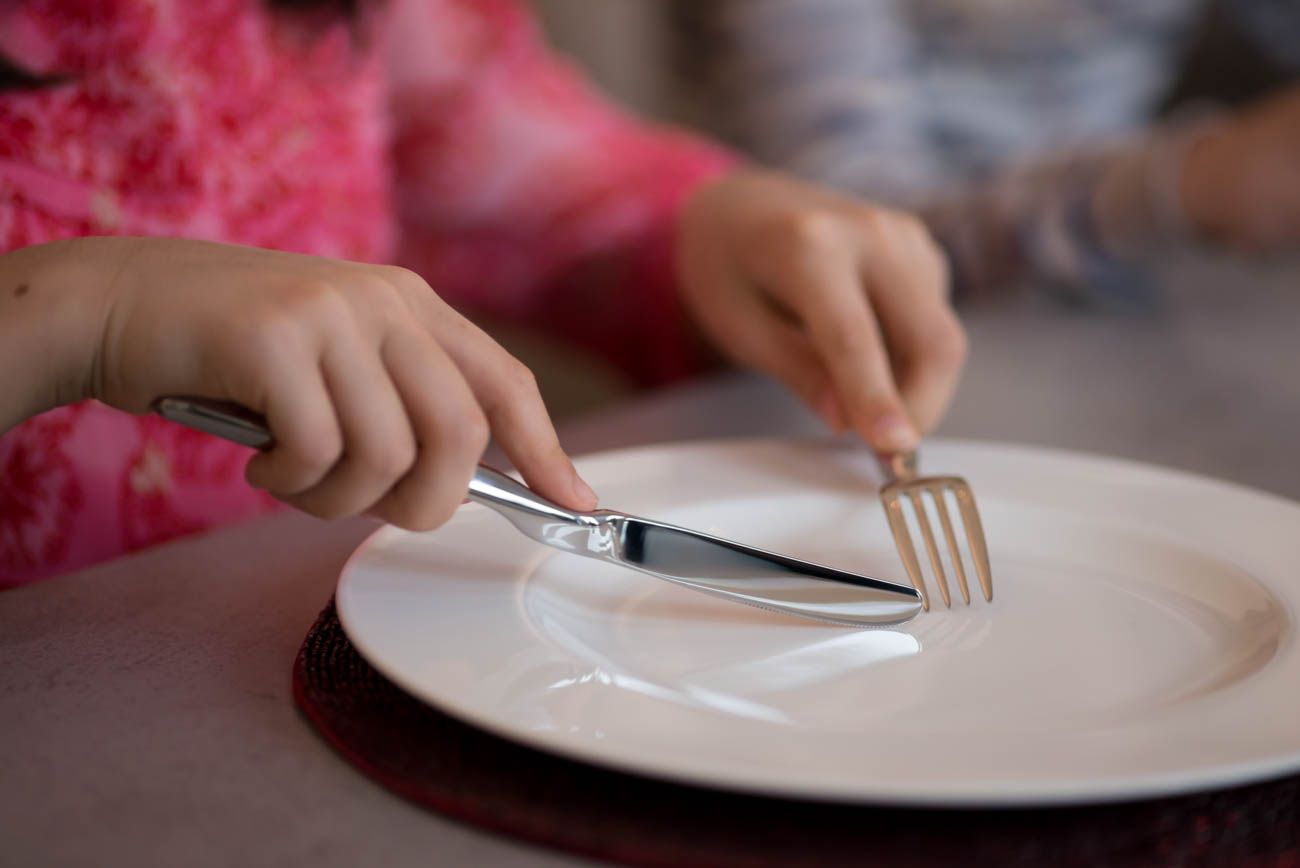




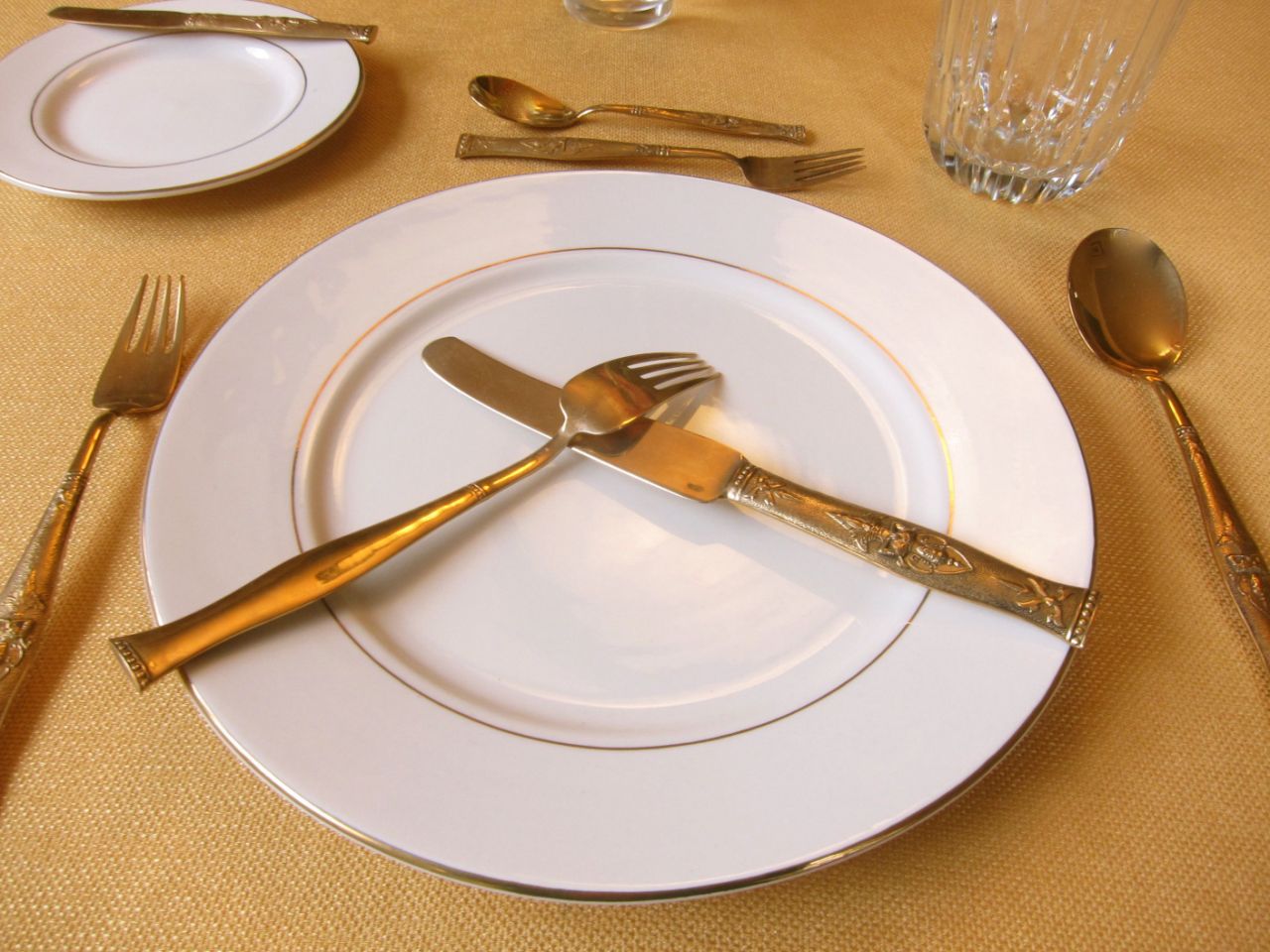
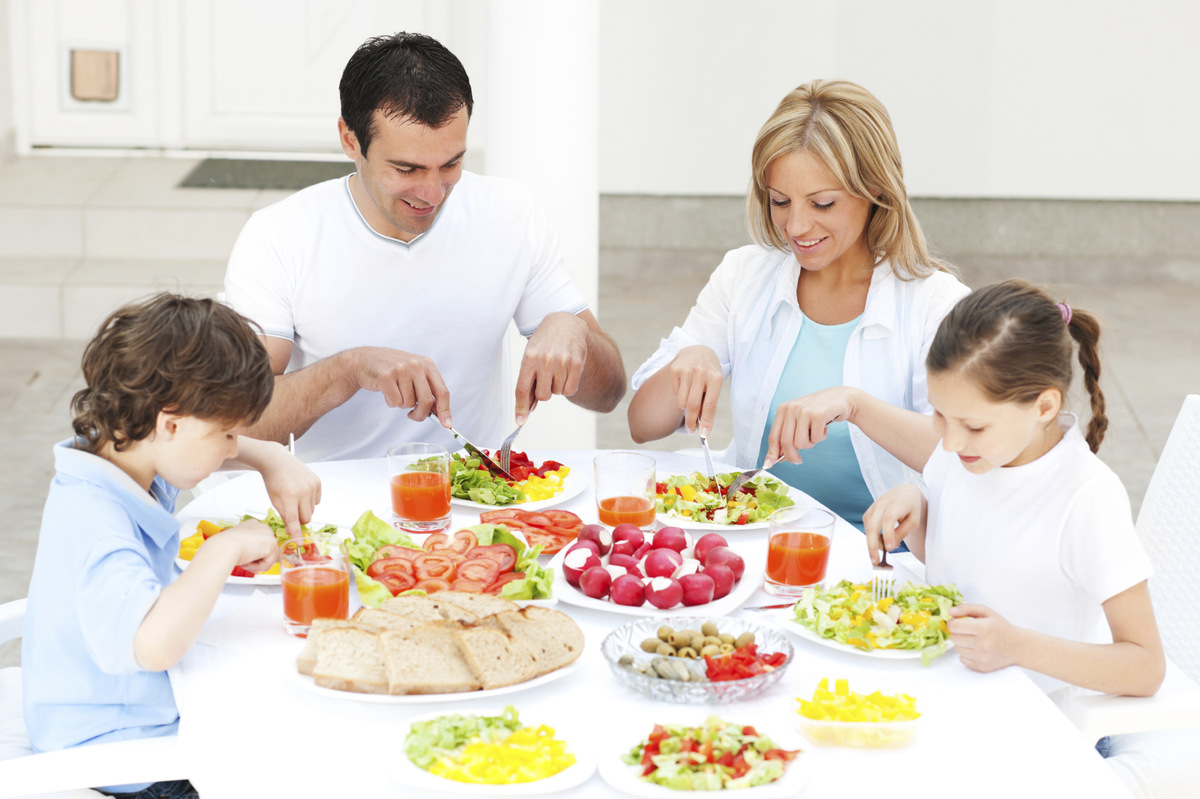



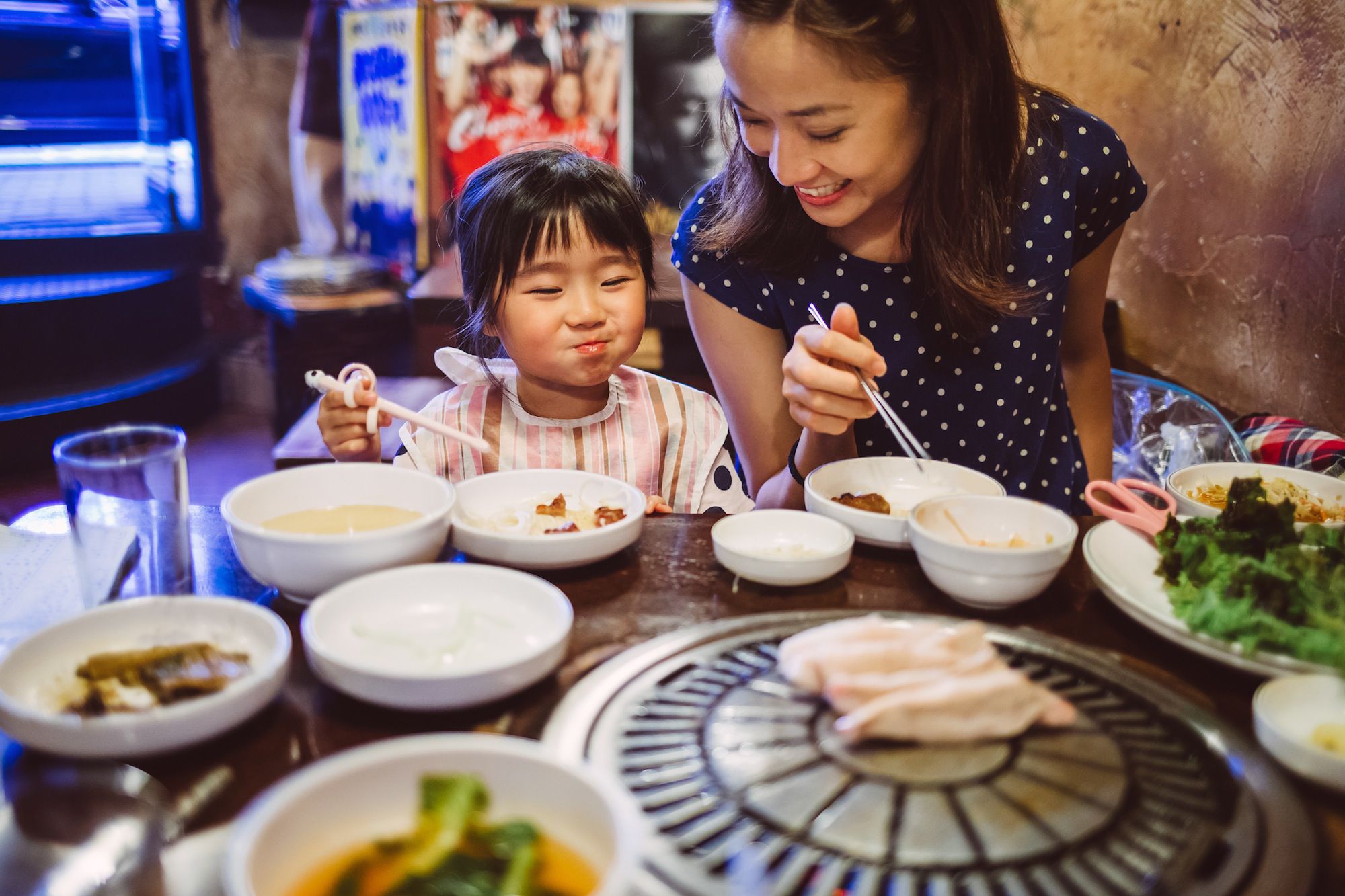
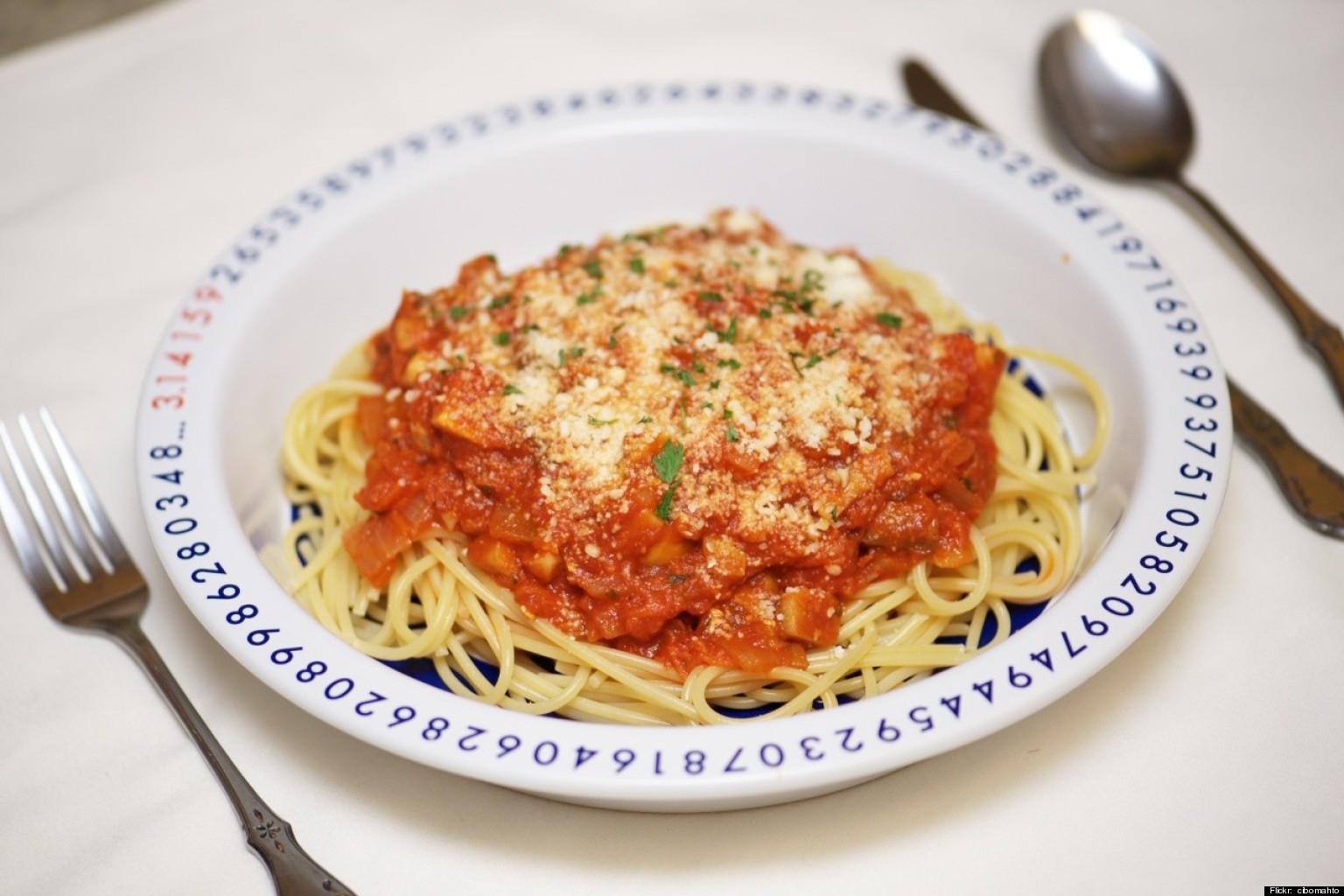

0 thoughts on “How To Teach A Child Table Manners”